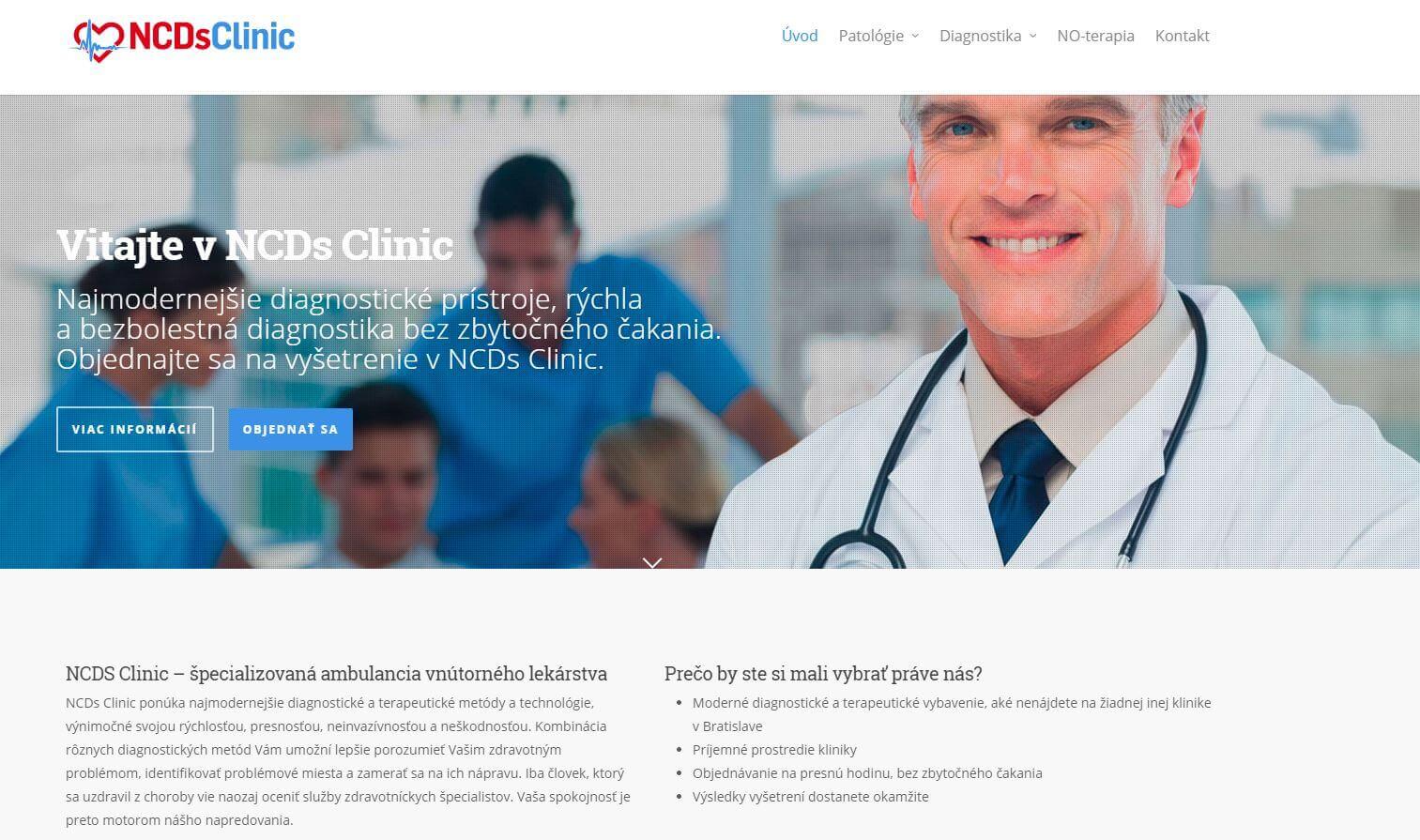Medical devices
search
news
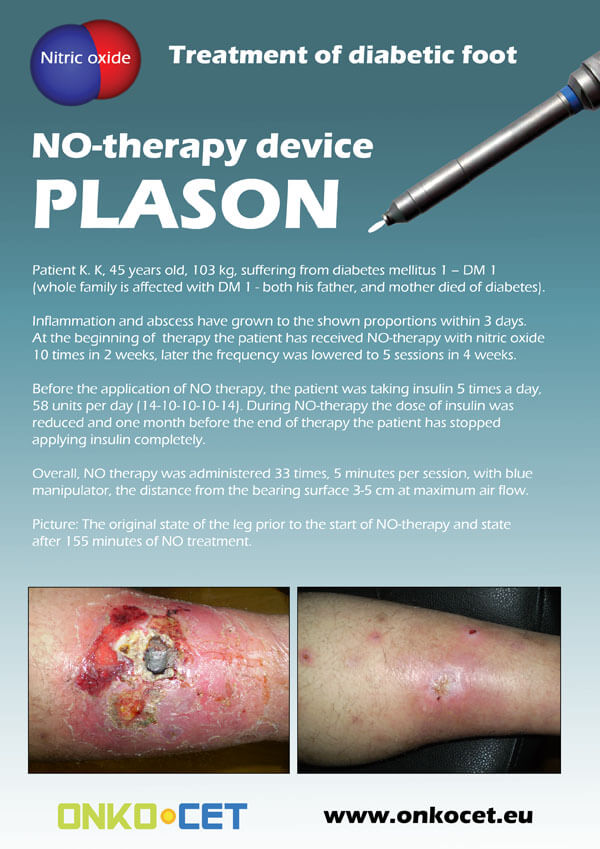
The PDF with the short report with pictures from the therapy of a diabetic foot can be viewed or downloaded here.
The pictures from the treatment of unhealing wounds an be found here:
http://www.onkocet.eu/en/produkty-detail/220/1/
The pictures from the treatment of unhealing wounds an be found here:
http://www.onkocet.eu/en/produkty-detail/293/1/
ONKOCET Ltd. has exhibited the devices from its portfolio on the MEDTEC UK exhibition in Birmingham, April 2011 through our partner Medical & Partners.
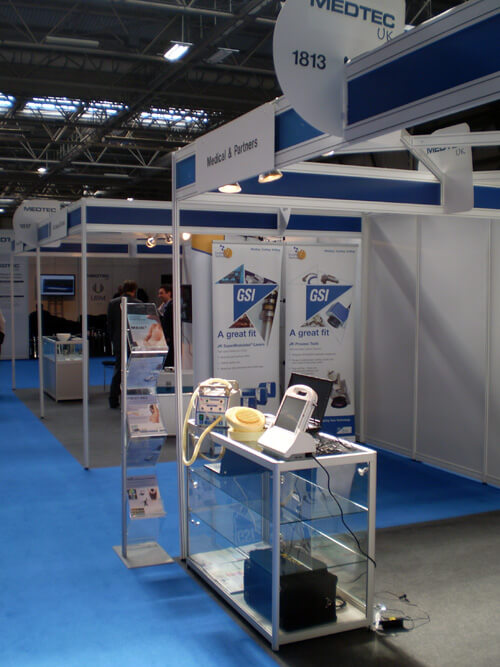
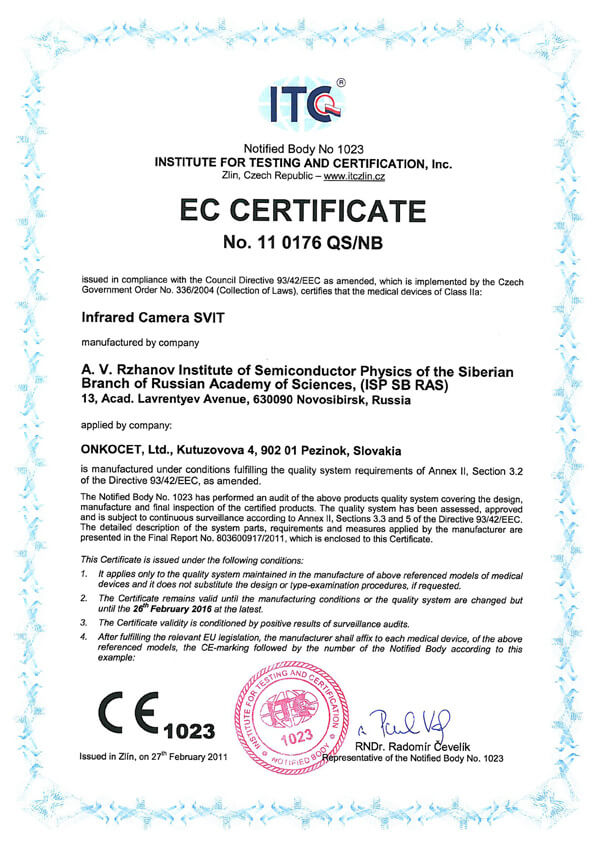 The ONKOCET company has successfully reached the certification of yet another medical device, Infrared Camera SVIT. The Certificate can be found here. The videos from the device operation can be found here.
The ONKOCET company has successfully reached the certification of yet another medical device, Infrared Camera SVIT. The Certificate can be found here. The videos from the device operation can be found here.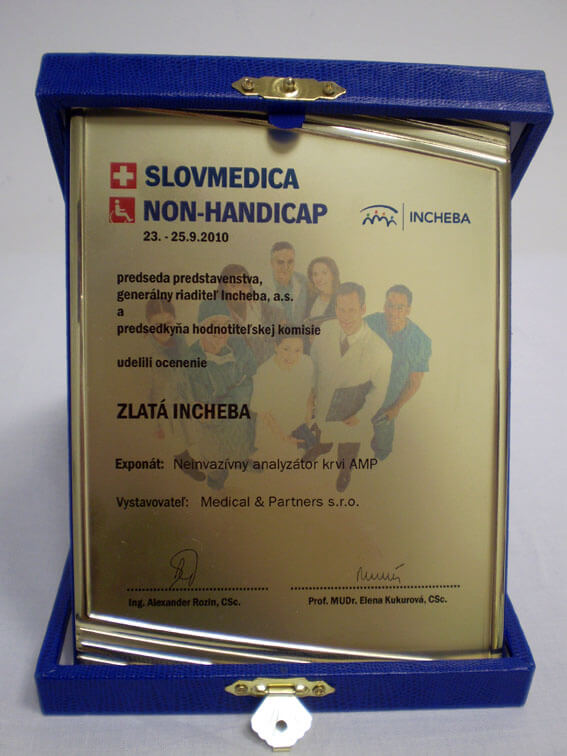 Our device, the non-invasive blood analyzer AMP has won the Golden Incheba prize at a medical exhibition SLOVMEDICA - NON-HANDICAP 2010. A big thank you goes to the organizers of the exhibition for acknowledging the quality of our device and to the exhibitor, the Medical & Partners company, for introduction of the AMP device to the medical public again.
Our device, the non-invasive blood analyzer AMP has won the Golden Incheba prize at a medical exhibition SLOVMEDICA - NON-HANDICAP 2010. A big thank you goes to the organizers of the exhibition for acknowledging the quality of our device and to the exhibitor, the Medical & Partners company, for introduction of the AMP device to the medical public again.We are pleased to inform our business partners, that our company has succesfully finished the certification process of Concor Soft Contact Lenses.
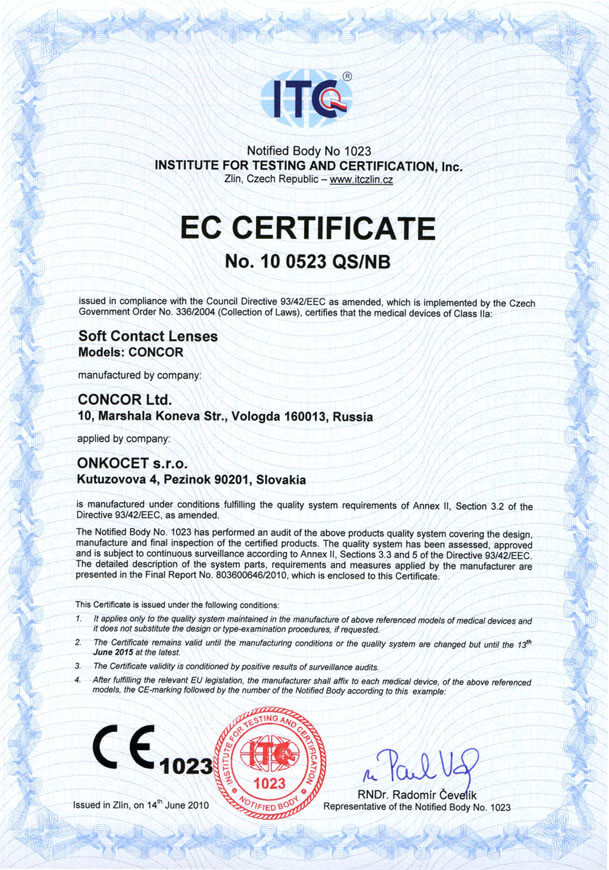 You can find the certificate here.
You can find the certificate here.More information on Concor Soft Contact Lenses go to section Medical preparations/Concor soft contact lenses, or follow this link.
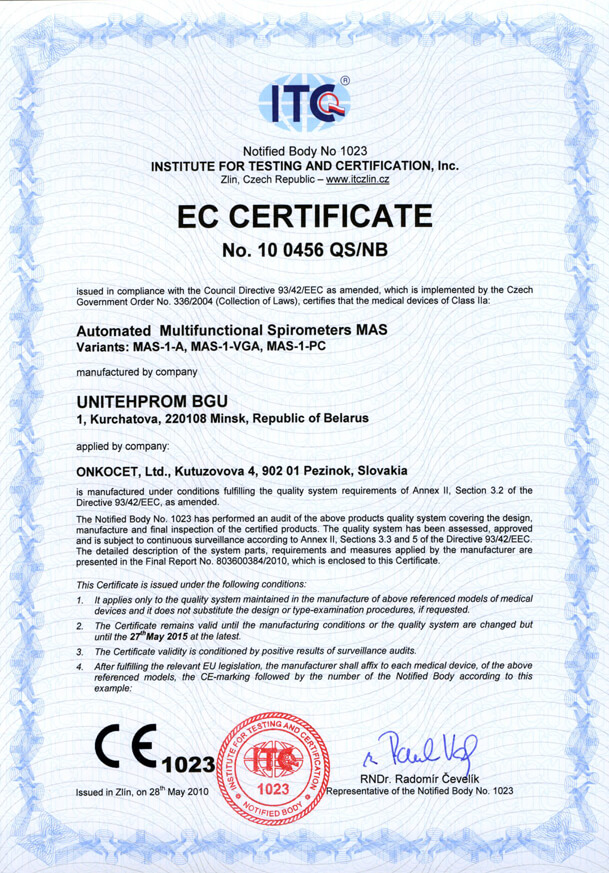 Our company has finished the certification process for another medical device, computerized spirometer MAS-1K with oximeter. You can find the device certificate here.
Our company has finished the certification process for another medical device, computerized spirometer MAS-1K with oximeter. You can find the device certificate here..jpg) Since May 2010 there is a new version of AMP device available.
Since May 2010 there is a new version of AMP device available.Follow this link if you want to see the pictures and specifications of the device.
http://www.onkocet.eu/en/produkty-detail/293/1/
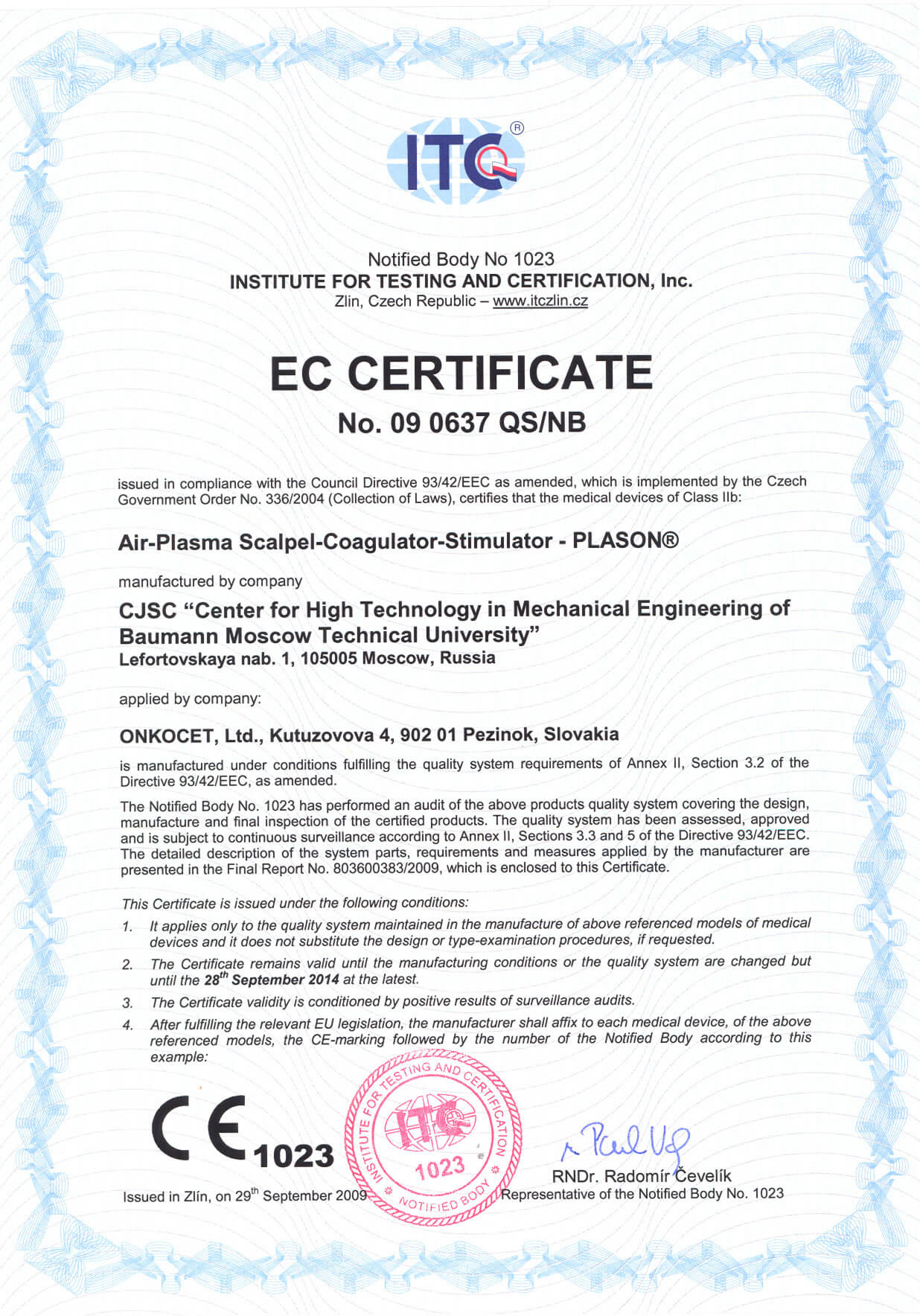 Dear partners,
Dear partners, In October 2009 we have received CE certificate for another device from our portfolio, NO therapeutical device PLASON. You can find more information about this revolutionary device, used for healing of unhealing wounds, diabetic foot, or for cosmetical purposes, at our webpage, section "Medical devices" -> PLASON-NO Therapy.
.gif)
Best regards
Team of ONKOCET Ltd. company
Exogenous NO and microorganisms (experiment)
In vitro study of influence exogenous NO on growth of microorganisms
In the work were used the clinical strains of E.coli, St. aureus, Ps.aeruginosa, P.vulgaris, Candida albicans, which have been the most typical agents of hospital infection. The suspended in the physiological solution daily cultures of microorganisms in the concentration to 106 units/ml on 1 standard loop (0,005 ml) sowed to dense nutrient medium - medium of Ploskirev, yolk- salt agar with the mannitol, blood agar, Endo's medium. The sowing cultures processed by NO -CGF of apparatus "PLASON" during 1, 3 and 5 min from the distance of 6 cm by circular pendular motions. The processed cups incubated in aerothermostat with 37°C for 24 hours, after which was evaluated an increase in the microorganisms. In the check studies the sowings of cultures at the same dose processed in no way.
For checking the assumption about the possibility of NO influence on the factors of the aggression of the microorganisms, which are frequently determined by plasmids, was used the clinical hemolytic strain of E.coli Hly+. After working during 1min was investigated the hemolytic activity of the strain of the directly irradiated culture, also, after its growing for 20 hours in the nourishing bouillon. For obtaining the reliable results three analogous sets of experiments was carried out.
As a result carried out experiment the following data have been obtained. With the exposure into 1 minute is obtained an increase in E.coli, St. aureus, Ps. aeruginosa and Pr. vulgaris, essential rarefactions there was no sowing in comparison with the control. However, an increase in the microflora was absent with exposure 3 and 5 minutes. For refining the minimum bactericidal exposure were used the shorter ranges of working - from 1 to 3 minutes. It was established that with the exposure 1 min 15 it flogged it is noted the rarefaction of sowings, it flogged that considerably increased after working by a duration of 1 min 20, with the working 1 min 30 it flogged increase no longer obtained. During the study the yeast fungi of the kind of Candida their viability remained with all exposures without the visible rarefaction.
During the study the hemolytic activity of the strain of E.coli Hly+ (directly irradiated culture and after its growing for 20 hours in the nourishing bouillon) of the elimination of plasmids it was not observed.
Thus, it is possible to assert that the cells of bacteria, which relate to different, they perish under the action of the exogenous nitrogen oxide with the exposure of 1minut and 30 sec. Reduction in the number of population of microorganisms occurred to more than three orders.
